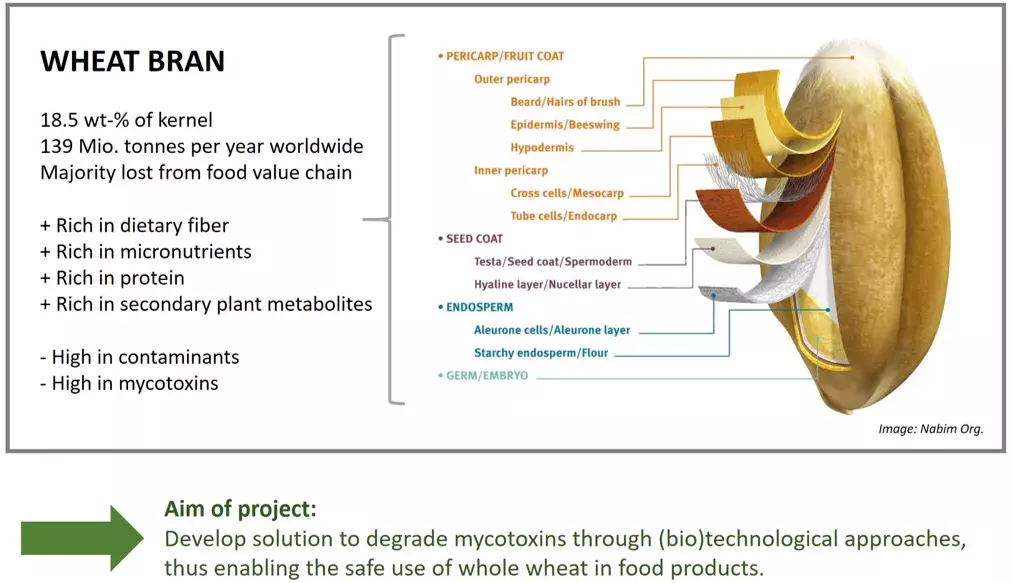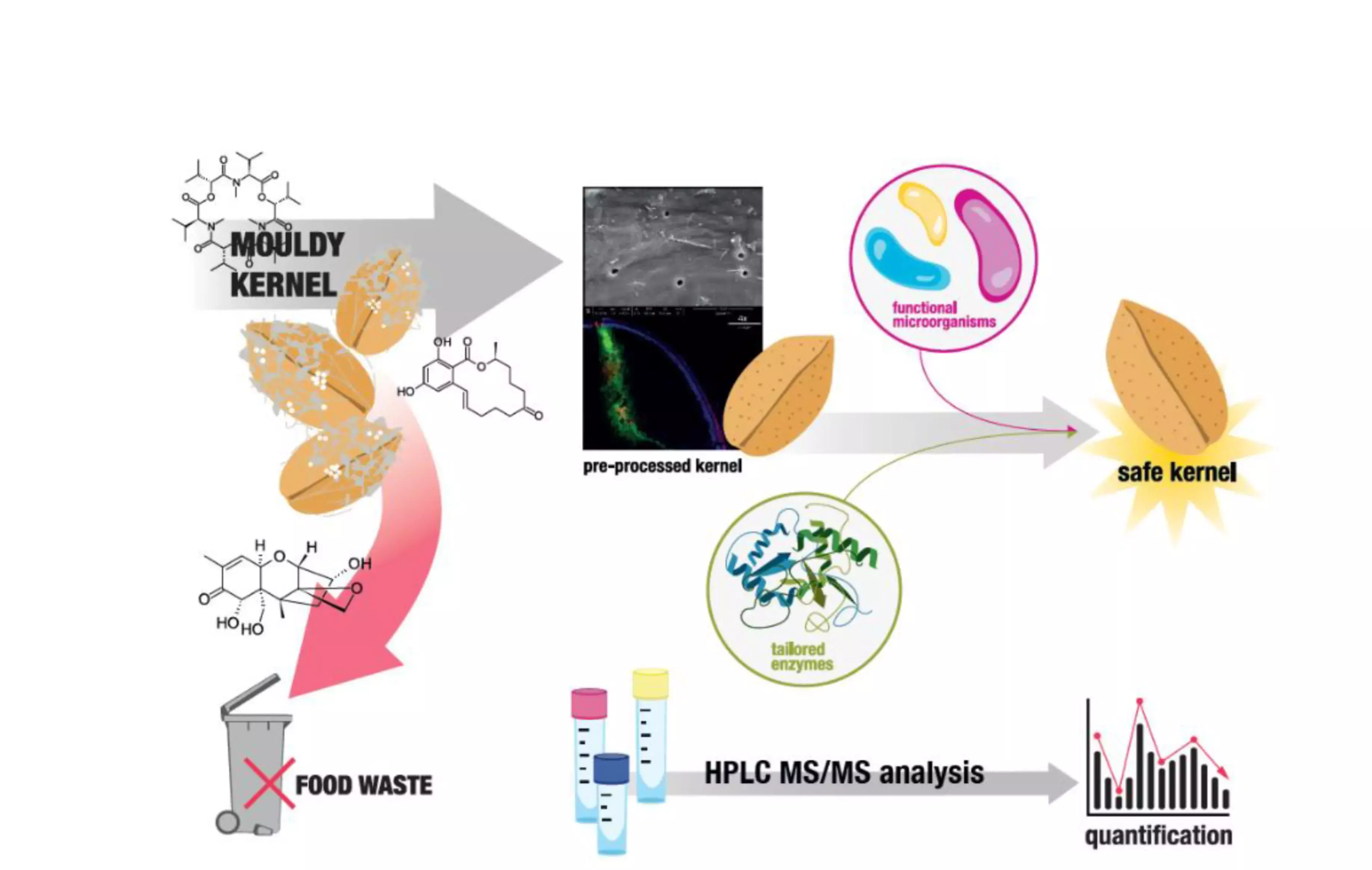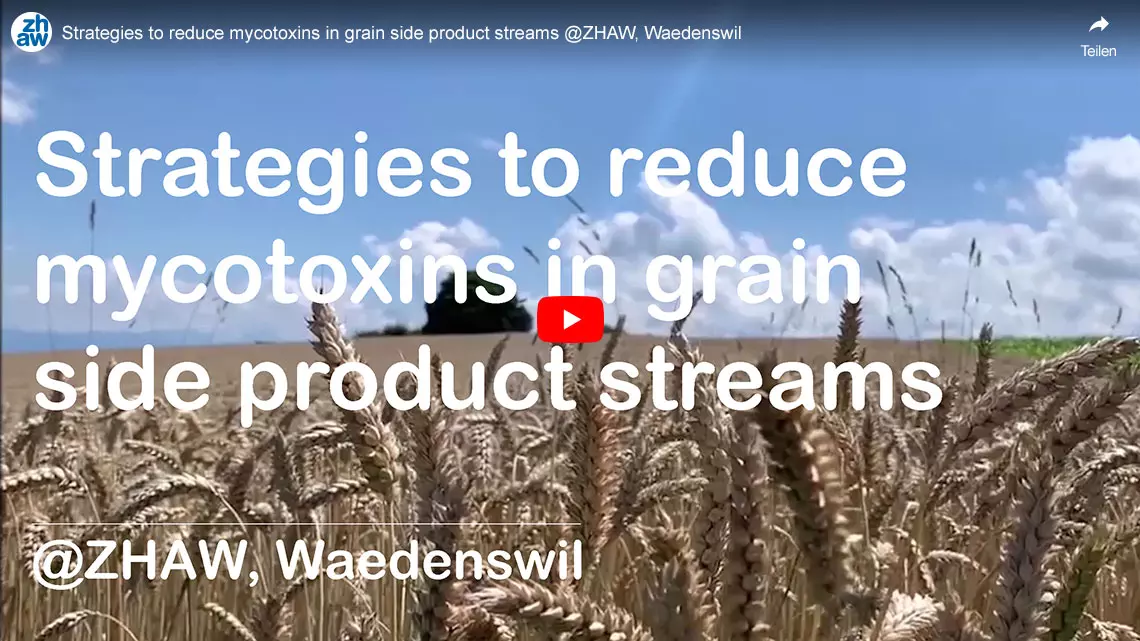Strategies to reduce mycotoxins in grain side product streams enabling their reintroduction into the food value chain
Description

Wheat is one of our key staple foods worldwide and offers high nutritional value, especially when consumed in the form of whole grain. Food safety has become a major challenge within crops in recent years: an estimated 25% of all global crops are affected by moulds. Certain moulds produce mycotoxins, toxic compounds that are chemically stable and survive food processing. Their physiological effects upon consumption range from acute poisoning to immune deficiency or cancer.
In general, the degree of contamination in grain goes down from outer to inner kernel layers. This is one of the reasons why even today white and medium-white flour are primarily produced despite the development of sensorially desirable whole grain products and why wheat bran is mostly used as animal feed or sometimes burnt.
In this project, an interdisciplinary team consisting of researchers from Food Biotechnology, Food Chemistry, Biocatalysis and Food Technology jointly tested the efficacy of two main strategies - functional microorganisms and / or tailored enzymes - to reduce mycotoxins in wheat.
The effectiveness of a pre-treatment of wheat kernels through cold needle perforation was proven through a qualitative visual analysis method. Mycotoxins were successfully degraded into less-toxic compounds by both enzymes and microorganisms and the efficacy proven through a novel, highly sensitive analysis method.


